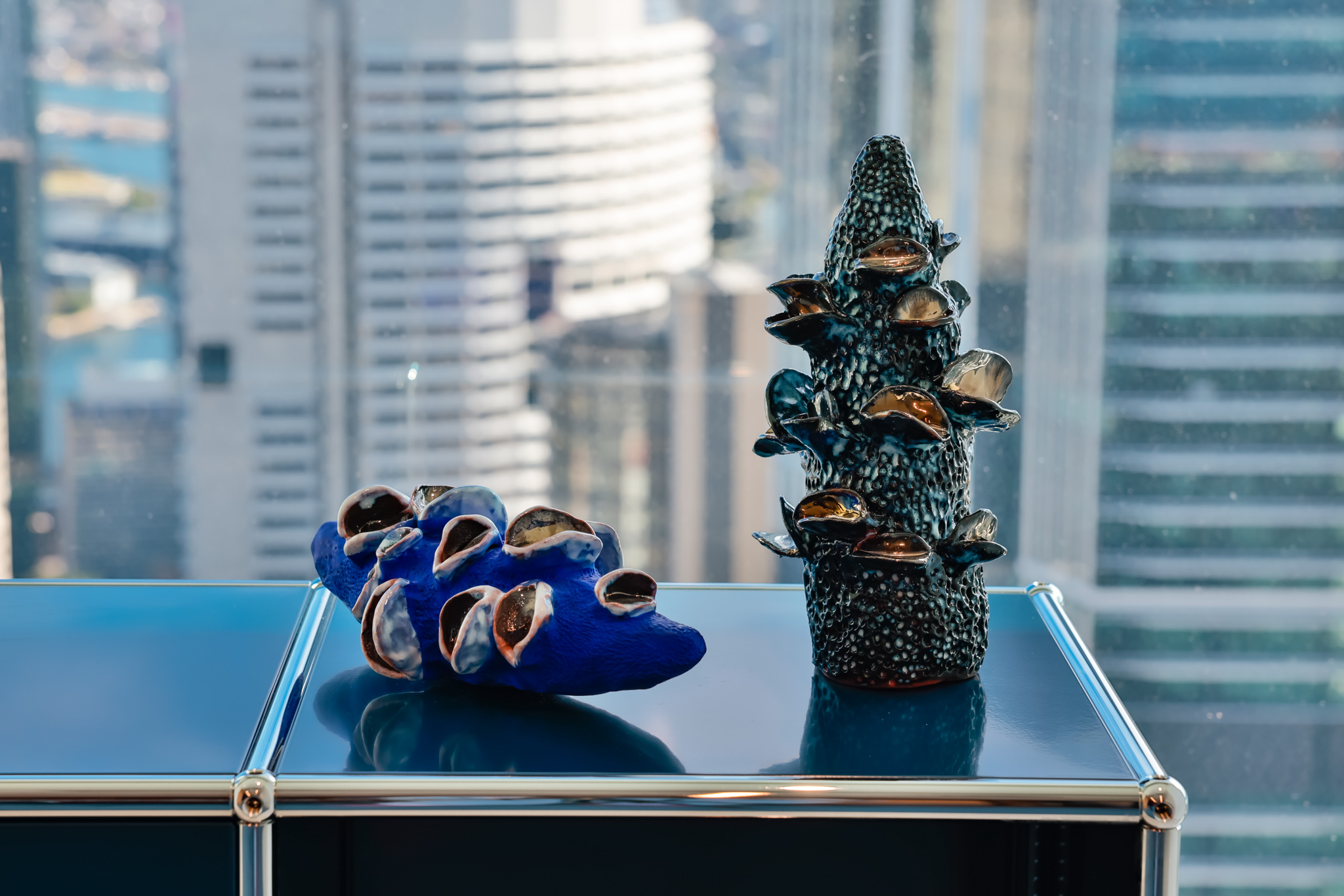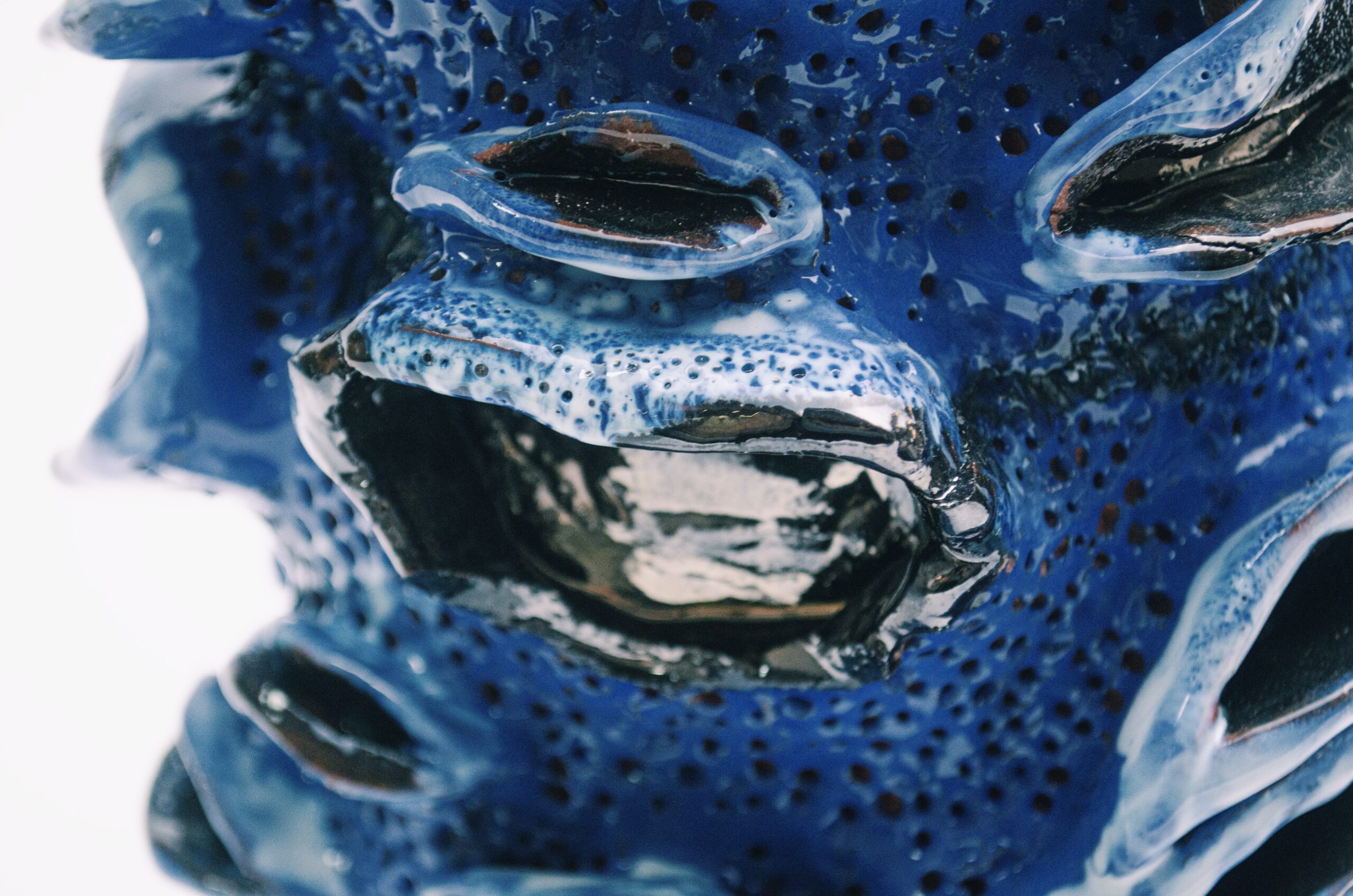To celebrate our recent curation of Deloitte Sydney’s new offices in Quay Quarter Tower, we sat down with artist Lisa Carrett.
Art Pharmacy has curated Deloitte Sydney’s art collection for their brand-new offices at the multi-award-winning Quay Quarter Tower.
An eclectic mix of 20 established to emerging artists, the collection showcases some of Sydney’s most sought-after and exciting young artists including Lisa Carrett.
Lisa Carrett’s hand-crafted enduring sculpture, Banksia Serrata represents the banksia’s qualities of simultaneous beauty and trauma. As an artist, Carrett was interested in providing the audience with a space to reflect upon Australian narratives and our relationship to the natural environment. The banksia becomes a symbol of resilience within the landscape, existing in a space that is simultaneously familiar and strange.





“…It was a powerful image situating the banksia against this familiar and iconic Sydney urban scenery, instantly drawing upon this narrative of the historical and contemporary landscape.”
What was a favourite moment or process for you throughout this engagement?
One of my favourite moments was the final installation of the artwork, seeing the work in relation to the powerful backdrop of Sydney Harbour. I found it so inspiring when the Art Pharmacy team and I were in the Deloitte office space pairing the sculptures. The light was refracting and bouncing off the golden glazes, creating this beautiful dynamic between sculpture and place. Furthermore, it was a powerful image situating the banksia against this familiar and iconic Sydney urban scenery, instantly drawing upon this narrative of historical and contemporary landscape.
Could you tell me a little bit more about the significance of the banksia in Banksia Serrata?
The Banksia Serrata is loaded with cultural and personal meaning. Commonly known as Old Man Banksia, it belongs to the family Proteaceae. It is native to the east coast of Australia and is particularly prevalent along the coastline where I currently live and practise my artmaking. Within the series Banksia Serrata, the work is an investigation into the symbolism of a rich Australian flora. This body of work reflects upon the banksia as an enduring symbol of resilience within the landscape. Through the sculpted form, I am interested in reflecting upon the vulnerability and simultaneous endurance of the banksia and its surrounding environment. Pigment and coloured glaze is used to exaggerate and alienate its familiar quality. The banksia is sculpted in the temporal and fragile clay medium, before being fired into an enduring object. The dual quality of flora, imbued with a sense of trauma and simultaneous beauty reflects upon Australia’s landscape and its darker histories of discovery.
How does your work connect with the surrounding environment?
As a symbol of resilience within Sydney Harbour’s post-colonial landscape, the banksia forms the central theme of this body of work. The work becomes this permanent reminder of the landscape as it was prior to colonisation and attempts to create a connection between the real and the imagined, the known and the unknown, a strange plant in a strange land. Banksia Serrata becomes this representation of our national identity and the dual feeling that we are both connected and simultaneously estranged from the landscape.
How do you feel about having your work displayed in a corporate setting?
The setting provides a really unique and playful dynamic between the sculpted form and the surrounding cityscape. The work is extremely site specific, located within an iconic and picturesque harbour, reflecting on these huge themes of national identity, culture and our environment. Key issues for those in powerful positions. I feel that engaging with art in this context allows people to think critically and creatively and inspires new ideas.
What materials, techniques, or processes did you utilise in your artwork?
All of the pieces are crafted by hand, which involved sculpting the small pods, constructing the bodies of the Banksia, and then carving away the small textured hollows. I am also a painter so I find the glazing technique to almost emulate an expanded and experimental canvas, building up textures and layers of matt and shiny glaze. There is a loss in control in the firing process and the glazes are exposed to extreme temperatures, so each banksia comes out of the kiln completely unique in form, colour and texture. Furthermore, a correlation exists between the rejuvenation process of the banksia. In turn this becomes a testament to the Australian landscape’s strength and adaptability, and its ability to recover from colonial trauma.


Do you see your engagement with this project as contributing to your overall artistic vision and goals? If so, in what ways?
My artistic vision revolves around continuous reflection on the environment and psyche that make the Australian landscape a truly distinctive subject. Collaborating with the Art Pharmacy team, I sought to craft a piece that engaged in a meaningful conversation with other commissioned artworks, sparking a dialogue surrounding our connection to place. It was really incredible contributing to this project and as an emerging artist, I feel really honoured to have been selected. It means a lot to be recognised alongside my peers, especially as an artist early in their career.
What do you hope viewers will take away from experiencing your artwork?
I hope viewers feel a sense of nostalgia and awe, a sense of wonder and connection to the environment, nurtured by First Nations peoples for thousands of years. Through this connection, I aim to foster a greater appreciation and understanding of the Australian landscape, encouraging viewers to perceive the beauty and complexity of our natural environment through a renewed lens.
Lisa Carrett is an interdisciplinary Sydney-based artist, engaging with ideas of the fragmented landscape and fractured memory. Within her work, Australian iconography and familiar imagery of home sit in fractured and uncharted terrain. Working across mediums including painting and ceramics, Carrett’s work investigates transient landscapes both past and present, addressing the way memory intersects with place. She seeks to disrupt and unsettle the audience through a bold colour palette, rendering imagery that is both simultaneously familiar and strange. Her work tells the narrative of growing up in working class Australia, of darker postcolonial histories and uncanny narratives. In 2019, Carrett graduated from UNSW Art and Design with a BFA (Honours).
Read more about the project here.

